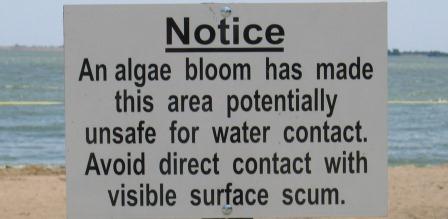Lakes are in Crisis: Wake Up
Lakes have become dumping grounds.
Denial ain’t just a river in Egypt. It’s a failure to comprehend the crisis of freshwater lakes world-wide. Here are the facts. 48% of all North American lakes are classified as eutrophic; 54% of lakes in Asia; 53% of European lakes; 41% of South American; and 28% of lakes in Africa.
A eutrophic lake is a lake that is so overloaded with nutrient pollution that human health is at risk. It’s our fault. Lakes and Reservoirs are in crisis because we’ve put them there.
- 1.2 trillion gallons of sewage, storm water and industrial waste are discharged into U.S. waters every year.
- 2.2 billion lbs. of pesticides wash into American rivers and lakes every year.
- 25% of U.S. beaches are closed at least once every year because of toxicity.
- 60% of U.S. estuaries and bays are severely degraded because of nitrogen and phosphorous pollution.
The fertilizers, chemicals, pesticides and herbicides we use to grow green crops and lawns end up in lakes. Septic systems seep, water sanitation systems fail, human and animal waste enters the watershed unabated and lakes take the hit. In fact, lakes have become our final dumping ground – an aquatic compost pile.
HERE’S WHAT HAPPENS TO THE LAKE
As the watershed carries phosphates, nitrates and other chemicals into the lake, the lake gets overloaded with nutrients. These nutrients fuel explosive weed growth and harmful algal blooms.
When weeds and algae die (normally or abnormally with herbicides), they settle to the bottom of the lake and decompose along with bird/animal feces and other sewage deposited by the watershed. The bottom of the lake becomes a compost pile; a fertile dumping ground.

As the cycle of weed/algae growth, death and decay continues, so too does the amount of lake-bottom compost (muck). This compost pile, in turn, continually feeds the lake more nutrients. The lake begins to internally overload itself with nutrients and the spiraling amount of dissolved oxygen sends the lake into a state of hypoxia and eutrophication. The lake suffocates. It’s a downward cycle. Dissolved oxygen is the life force of a healthy ecosystem. Without it, beneficial microorganisms that form the basis of the aquatic food web disappear.
HERE’S WHAT HAPPENS TO PEOPLE
Weeds and some algae are a nuisance. Toxic blue-green algae can kill you. In 2002 a 17 year old boy went swimming in a lake in Wisconsin. He developed nausea, began vomiting, and went into shock with seizures. He died 48 hours after swimming from acute heart failure caused by anatoxin – a type of cyanotoxin produced by blue-green algae.
When a lake becomes severely overloaded with nutrients (hypereutrophic), blue-green algae appear. When blue-green algae appear, animals and people who use the lake get sick. Children and the elderly are particularly vulnerable. Alarmingly, one doesn’t have to swim in the lake to get sick. Airborne cyanotoxin can enter the respiratory system. Living on or around the lake can also make you seriously ill.

Photo Credit: Jennifer L. Graham, USGS
HERE’S WHAT HAPPENS TO LAKE COMMUNITIES
When a lake is eutrophic, not only do people get sick, lake communities lose a valuable recreational resource and suffer economically. A 2008 study by the Division of Biology at Kansas State University tied nutrient overloading in American recreational lakes with economic impact. The financial loss each year is astounding.
- $1 billion loss in recreational water usage such as fishing and boating.
- Waterfront property devaluation is approximately $2.8 billion.
- $813 million loss in drinking water supply.
- $44 million lost in threatened/endangered species recovery.
The annual combined economic loss of human-induced nutrient overloading is roughly $2.2 billion. By far the biggest losers are lakefront property owners and recreational users.
NO LAKES ARE IMMUNE
Every lake has been impacted. No lake in North America is immune. Wake up and smell the compost – weeds and algae are symptoms of much deeper problem – the accumulation of lake-bottom muck from decades of nutrient overloading. Weeds and algae are warning signs that your lake is in trouble.
Identity Photogr@phy/Foter.com/CC BY
























